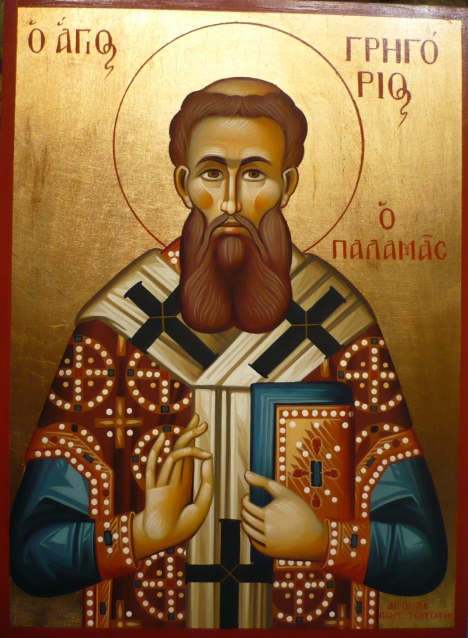Two different but complementary interpretations of the Transfiguration
Those who read the previous piece about the Melkite Greek Catholic liturgy with Bishop Nicholas at the Gesu chapel on the Berkeley tomorrow at 5pm will have read this already, but it was buried away at the bottom of the piece and it occured to me that some who don’t live in California would be interested to read this, so here we go.
In the Melkite Church, The Divine Liturgy for Sunday, March 12th, is a commemoration of theologian St Gregory Palamas. St Gregory was Orthodox and he lived in the 14th century. I became aware of him through various icon painting classes where he would be referred to in connection with the theology of icons, in which the argument concerning the light of the sanctity – the ‘uncreated’ light of Christ – was attributed to him. This is the basis for example, for the painting of the halo, a symbolic representation of the light on holiness; and of the fact that there is no cast shadow when the saints are painted, for they are the course of the light that obliterates shadow caused be external light sources.
Very often Palamas and Aquinas are pitched against each other on the doctrine of deification. There has been work to reconcile the work of the two, for example this book by AN Williams. Here is my own perception of this in very simple terms and it relates to an interpretation of the Transfiguration.
Years ago, I was told of a difference between East and West in the interpretation of the event of Mt Tabor. St Thomas Aquinas, I was told, argued that Christ changed when he shone with light and this was an anticipation of the beatific vision.
St Gregory Palamas, on the other hand argued that the apostles changed spiritually and they were able, temporarily to see the uncreated light of Christ – their climbing of the mountain was a metaphor for their spiritual upwards movement towards a greater purity in heart. Furthermore, through the sacramental life of the Church it is possible for all of us, by degrees to grow in purity and be transformed so that we can both witness and shine with the uncreated light of Christ. As Our Lord told us, blessed are the pure in heart for they shall see God.
As I thought about this, I raised this point, which I thought was a contradiction, with a Benedictine monk at Pluscarden Abbey in Scotland when I was on retreat there once. He told me that I should ‘think liturgically’; and suggested that these two interpretations were not mutually exclusive. There might be a dual motion taking place in some way in that just as God comes down to us, so to speak, as Christ is present in the Eucharist, so in taking communion we are supernaturally transformed, potentially, and so are raised up to meet Him.
So that’s my little pitch for East West unity and two lungs breathing as one etc…..


